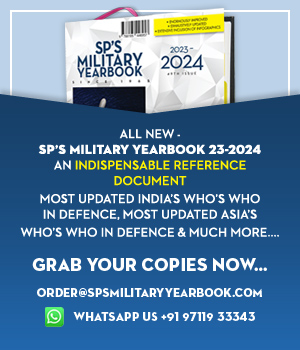INDIAN ARMED FORCES CHIEFS ON OUR RELENTLESS AND FOCUSED PUBLISHING EFFORTS
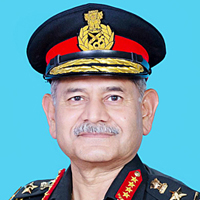
The insightful articles, inspiring narrations and analytical perspectives presented by the Editorial Team, establish an alluring connect with the reader. My compliments and best wishes to SP Guide Publications.
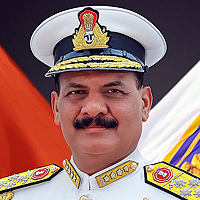
"Over the past 60 years, the growth of SP Guide Publications has mirrored the rising stature of Indian Navy. Its well-researched and informative magazines on Defence and Aerospace sector have served to shape an educated opinion of our military personnel, policy makers and the public alike. I wish SP's Publication team continued success, fair winds and following seas in all future endeavour!"

Since, its inception in 1964, SP Guide Publications has consistently demonstrated commitment to high-quality journalism in the aerospace and defence sectors, earning a well-deserved reputation as Asia's largest media house in this domain. I wish SP Guide Publications continued success in its pursuit of excellence.
- Indian Air Force Aims for Full Indigenous Inventory by 2047 — Air Chief Marshal A.P. Singh
- Rajnath Singh assumes charge as Defence Minister for the second consecutive term
- Interim Defence Budget 2024-25 — An Analysis
- Union Defence budget 2024
- Prime Minister Modi Flies in the LCA Tejas
- New Chapter in India-Italy Defence Ties
- Airpower beyond Boundaries
US-India Military Cooperation under Vice President J.D. Vance: F-35, Joint Autonomous Systems Industry Alliance & Nuclear Reactors for India
Recent visit of US Vice President J.D. Vance to India underscored the deepening defence ties between the two nations

In April 2025, US Vice President J.D. Vance's four-day visit to India underscored the deepening defence ties between the two nations with the launch of a joint Autonomous Systems Industry Alliance for maritime. His discussions with Prime Minister Narendra Modi centred on enhancing military collaboration, including joint production initiatives, advanced fighter jet acquisitions, and a unified approach to Indo-Pacific security.
Strengthening Military Cooperation
Vice President Vance emphasised the robust nature of the US-India defence partnership, advocating for its expansion through joint production and technological innovation.
"Now, on defence, our countries already enjoy a close relationship — one of the closest relationships in the world. America does more military exercises with India than we do with any other nation on Earth," Vance opened up on the military cooperation with India.
The co-production of the General Electric F414 engine in India is a major step toward strengthening India's self-reliance in defence manufacturing and enhancing its aerospace capabilities.
"The US-India COMPACT that President Trump and Prime Minister Modi announced in February will lay the foundation for even closer collaboration between our countries. From Javelins to Stryker combat vehicles, our nations will co-produce many of the munitions and equipment that we'll need to deter foreign aggressors — not because we seek war, but because we seek peace, and we believe the best path to peace is through mutual strength," Vice President added to the growing India-US military exchanges, including some advanced platform like 5th Generation stealth fighter--F-35.
Vance especially highlighted, "American fifth-generation F-35s, for example, would give the Indian Air Force the ability to defend your airspace and protect your people like never before. And I've met a lot of great people from the Indian Air Force just in the last couple of days."
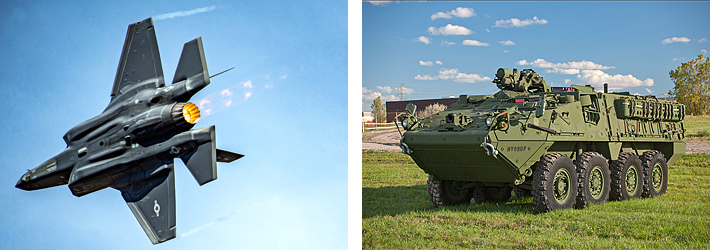
This initiative aligns with India's strategic objectives to modernise its armed forces and reduce dependency on external suppliers.
Further, the defence dialogues between the US and India are set to be in the final stage, and it is expected that both parties will launch this year. The dialogue will result in a comprehensive 10-year defence cooperation framework. This framework aims to institutionalise the strategic partnership, ensuring sustained collaboration in defence technology, joint production, and regional security initiatives.
Joint Production and Technology Transfer
As expected, the crucial discussion did take place on the co-production of the General Electric F414 jet engine in India. This engine is slated to power the indigenous Tejas Mark-2 fighter aircraft, marking a substantial leap in India's defence self-reliance. The agreement includes a transfer of technology, enabling India to enhance its domestic manufacturing capabilities and expertise in advanced aerospace engineering.
Additionally, India and the US are making progress in the co-production of Stryker armoured vehicles and long-range artillery systems. These initiatives aim to integrate advanced technologies into India's defence infrastructure, fostering interoperability and operational synergy between the US and Indian armed forces.
The launch of the joint Autonomous Systems Industry Alliance aims to develop cutting-edge maritime systems, marking a significant advancement in US-India cooperation in naval technology.
One of the key announcements which came from the vice president is the joint Autonomous Systems Industry Alliance. This is clearly in the direction of cooperating with advanced naval systems, in building a cohesive and credible maritime force.
"[The joint Autonomous Systems Industry Alliance] will enable America and India to develop the most state-of-the-art maritime systems needed for victory," he remarked.
This is vital for supporting India's access to key technologies, especially in the underwater domain.
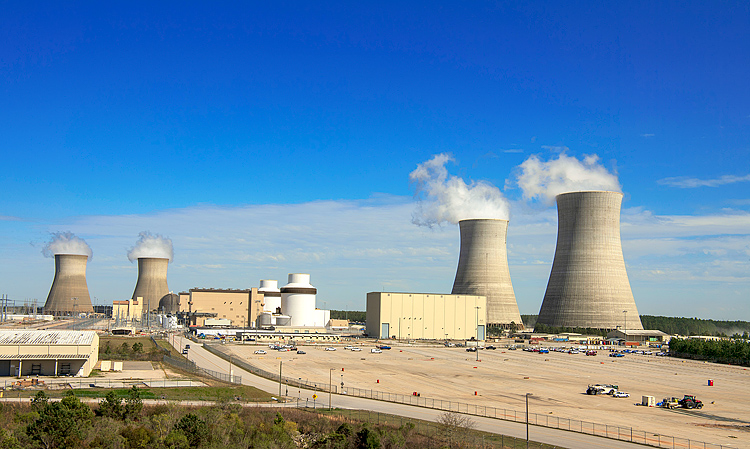
Advancing the Civil Nuclear programme
Vice President J.D. Vance's talk on advancing the civil nuclear cooperation with India highlights the strategic thrust on critical technologies, including the development of small nuclear reactors.
India's Nuclear power generation capacity has grown significantly in the last decade, nearly doubling from 4,780 MW in 2014 to 8,180 MW in 2024. India's Union Minister recently announced that the capacity is projected to triple to 22,480 MW by 2031-32, showcasing India's commitment to scaling up its nuclear energy infrastructure.
Amendments to India's civil nuclear liability laws will enable expanded cooperation with US nuclear firms, especially in deploying small modular reactors and large-scale nuclear technologies.
Also, the advanced technology is the key to harnessing the nuclear potential of India's abundant thorium reserves, which constitute 21 per cent of the global total. India's Department of Nuclear Energy (DAE), in its quest, is developing indigenous projects like "Bhavani" to harness this resource, reducing dependence on imported uranium and other materials.
Cooperation with the US will further unlock the tech and capacity gaps for India. As Vance supported the stance on this, he said, "We welcome the Modi government's budget announcement to amend India's civil nuclear liability laws, which currently prevent US producers from exporting small modular reactors and building larger US-designed reactors in India, Vance highted another key area of the cooperation which is also at the heart of India's growing thrust for greener energy in the overall policy.
The US-India defence relationship plays a central role in securing a free, open, and stable Indo-Pacific, with India set to host the upcoming QUAD Leaders' Summit.
The US-India TRUST initiative, which President Trump and Prime Minister Modi jointly launched, will drive such partnership in the future. It'll build on billions of dollars of planned investments that American companies have already announced across India.
Enhancing Indo-Pacific Security
The QUAD remains the key element of the larger security architecture in the US's strategic outreach to Asia, with India at the centre of the Indo-Pacific strategy. In fact, India will host the next QUAD summit.
The US-India defence cooperation is pivotal in ensuring a free and open Indo-Pacific. Both countries are committed to countering regional threats and maintaining stability through joint military exercises and strategic deployments. The collaboration extends to intelligence sharing, maritime security, and capacity building, reinforcing their role as key security partners in the region.
Vance emphasised such importance and said, "It's fitting that India, this year, is hosting the QUAD Leaders' Summit this fall. Our interests in a free, open, peaceful, and prosperous Indo-Pacific are in full alignment. Both of us know that the region must remain safe from any hostile powers that seek to dominate it."
Manish Kumar Jha is a Consulting & Contributing Editor for SP's Aviation, SP's Land Forces and SP's Naval Forces and a security expert. He writes on national security, military technology, strategic affairs & policies.




